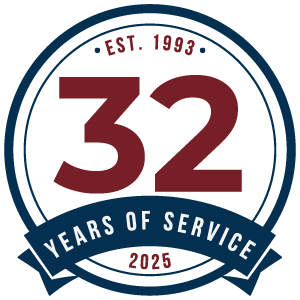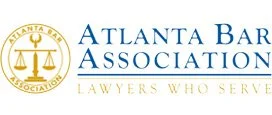Georgia Elevator and Escalator Accident Claims: What You Need to Know
Key Points:
- Approximately 17,000 people are injured in elevator or escalator accidents every year.
- Elevator and escalator accidents are dangerous because they involve machinery and humans who don’t always know how to use them.
- Elevator and escalator operators are bound by the “common carrier” rule, meaning they have an extraordinary duty to ensure the equipment is safe for use.
Table of Contents
Atlanta is a thriving city filled with high-rise structures, office buildings, airports, and shopping malls. All those buildings contain thousands of escalators and elevators. Most residents and visitors use these lifts without issue, but sometimes, accidents happen. Because of the tight tolerances of elevator doors and escalator steps, these accidents can lead to serious injuries.
Who is at Risk of Elevator and Escalator Accidents?
Anyone can be injured by faulty equipment. Some individuals are at greater risk of escalator and elevator accidents than others.
Young children find escalators and elevators fascinating. The endless movement of the steps is an irresistible attraction for toddlers, but their hands, feet, and loose clothing catch easily in the treads. Elderly individuals may become disoriented by the movement of escalator steps, while elevator doors can move too quickly for those with mobility issues.
Workers and employees in high-traffic areas face additional risks of breakdown and poor maintenance. If escalators and elevators are not inspected, maintained, and repaired according to required schedules, the constant use makes them prone to failure and accidents.
What Leads to Elevator and Escalator Injury Accidents?
Most of us never think about the elevators and escalators running continually for eight or ten hours a day, or longer if the building is open 24 hours. If the equipment is not maintained correctly, malfunctions are inevitable. Common causes of equipment failure include:
- Lack of Maintenance: Failure to inspect and maintain elevators and escalators can result in mechanical breakdown. Abrupt stops, loose steps, and other issues can result in falls or accidents.
- Improper Repair: Related to lack of maintenance, poor or improper maintenance can be almost as bad, leaving equipment half-fixed and prone to breakage.
- Poor Training: Staff must know how to shut down equipment in emergencies, where power supplies are located, and other emergency procedures for entrapments or mechanical failure.
- Missing Safety Features: Broken or absent emergency phones, stop switches, warning signs, or barriers are sources of hazard and liability.
- Design Defects: Equipment that is insufficient for the need, such as a passenger elevator being used for freight. Property owners are responsible for having equipment sufficient for the needs of their property.
Do Elevator and Escalator Accidents Result from User Error?
A personal injury lawyer must establish that a victim was using an elevator or escalator correctly at the time of the accident. For instance, most escalators have warning signs telling parents that children cannot ride in strollers on escalators. That would be an incorrect use of the escalator.
In most cases, people are using elevators and escalators properly. An attorney’s job is to show that an injury occurred because the equipment failed, or because signage should have been present indicating a hazardous condition.
How Do Elevator and Escalator Accidents Happen?
Elevator and escalator accidents happen for a number of reasons, ranging from simple carelessness to tragic miscalculation. Some shocking accidents include:
- Elevator shaft falls: There have been 25 incidents of maintenance workers falling down elevator shafts since 1982, mostly during maintenance and construction. Between 1992-2003, 18 passengers lost their lives when the doors opened suddenly and the passengers tumbled into empty space.
- Elevator door entrapment: Slow-moving passengers, particularly the elderly, can become caught in elevator doors if they close rapidly and the emergency stop mechanism fails to engage.
- Escalator falls: Sixteen fatalities occurred between 1992-2003 due to falls from escalators. The majority were head injuries.
- Escalator exit entrapment: In the same period, eight people were fatally injured when their clothing or body parts became entangled in the escalator at the top or bottom of the stairs. Approximately 20% of escalator injuries are due to such entanglements.
Most of these issues can be reduced with regular maintenance and tighter safety protocols.
What Are Common Elevator and Escalator Injuries?
The severity of an elevator or escalator injury depends on the individual and the type of incident. Falling down an elevator shaft is more serious than bumping one’s nose on the door. Some typical injuries may include:
- Falls: A common injury in both elevators and escalators, falls result from sudden stops, starts, uneven steps, and mismatched speed between stairs and handrails
- Cuts and Lacerations: Exposed metal, broken edges, uneven stair treads, and falls onto concrete or other hard surfaces.
- Entrapment: Fingers, toes, shoes, or clothing getting caught in the escalator steps or between the elevator doors and the elevator shaft are common and can lead to serious injuries.
- Strains and Sprains: Trying to correct a stumble or prevent a fall, especially on a moving escalator, can lead to muscle strains or sprains.
- Traumatic Injuries: More severe cases involve traumatic injuries such as fractures, broken bones, or even amputations, particularly when an escalator step malfunctions or when there is a significant elevator failure.
- Head and Neck Injuries: These can occur if an elevator makes a sudden stop, or if an escalator jerkily starts or stops, causing whiplash or other similar injuries.
- Back Injuries: Lifting heavy items onto an escalator or in an elevator, or a fall or jolt, can lead to back injuries.
Who Should be Held Responsible for Elevator and Escalator Accidents?
Under the laws of Georgia, the proprietor of an elevator is categorized as a “common carrier,” a designation with significant legal implications. As a common carrier, the elevator owner is mandated to “exercise extraordinary diligence to protect the lives and persons of its passengers.” This duty far exceeds the obligations of typical property owners.
Ordinarily, when an individual is injured in a location such as a store or an apartment, the injured party must demonstrate that the property owner was negligent or failed to fulfill their legal responsibilities. However, due to the common carrier rule, the operator of an elevator bears an augmented responsibility toward passengers, extending beyond merely ensuring the elevator's operational safety. The owner is under an “extraordinary duty” to exercise heightened caution.
Several ways an owner may fail to meet this elevated standard include neglecting to:
- Perform necessary maintenance.
- Follow recommended maintenance protocols.
- Update the maintenance company of issues or breakdowns.
If you’ve been the victim of an elevator or escalator accident, you will have to prove that the property owner or maintenance company failed in their responsibility to provide safe equipment for your use, and that you used the equipment properly on the day of the accident.
You will potentially have a claim against:
- The owner of the elevator or escalator
- The maintenance company responsible for the equipment
- The owner/operator of the premises.
Your eligibility to file a claim will depend on the location of the accident, your reasons for being there, and the identities of both the building's owner and the operator of the elevator or escalator.

 1201 West Peachtree Street #2339 Atlanta, GA 30309+1-770-212-3795$0-$100000
1201 West Peachtree Street #2339 Atlanta, GA 30309+1-770-212-3795$0-$100000The Millar Law Firm is a reliable source for help. Everyone is knowledgeable and accommodating, and I greatly appreciate their excellent service.

Can Being Trapped in an Elevator Make Someone Eligible for a Personal Injury Compensation?
To qualify for personal injury compensation, there must be an injury involved. If being stuck in an elevator leads to an injury, then compensation might indeed be possible. However, the truth is that most injuries in elevators do not occur simply because the elevator has lost power. More often, injuries are the result of mechanical failures, improper maintenance, or safety protocol lapses, which can lead to more direct accidents like falls or entrapments.















